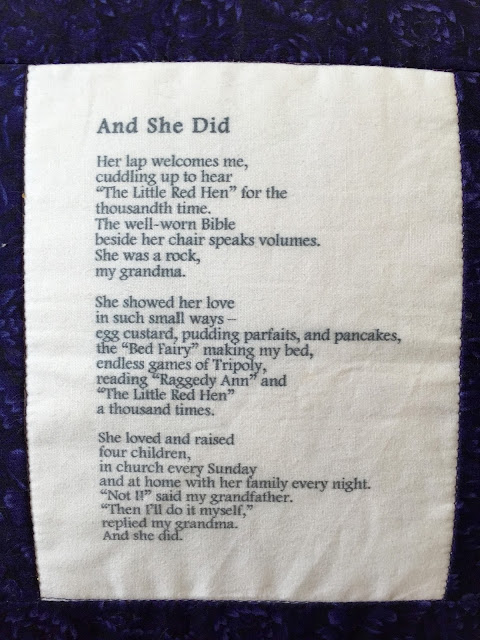Respect and admiration. That was my feeling the first time I (Teri) saw a Baltimore Album quilt. Unlike Kara, however, I was perfectly satisfied enjoying the beauty of those lovely appliquéd quilts, as long as someone else was making them. I was absolutely certain that skill set would never be mine, not to mention the fact that I was pretty certain I lacked the patience to complete such work. I was happy creating patchwork beauties; my one venture into appliqué had been a bit daunting. (See A Learning Journey to Celebrate Fifty Years.) After finishing that one block, I had happily surrounded it with patchwork.
So several years ago, when I started working with Elly Sienkiewicz of Baltimore renown, I did not expect to be pulled over to the "dark side" of the quilt world. Imagine my surprise the first day I worked with her, when she asked me if I would make some teaching models for a ruched rose. I just looked at her and told her she was highly overestimating my skills; I didn't even know what a ruched rose was, let alone how to make one. But she said she knew I could do it and proceeded to give me a quick lesson. And I did go home that night and make beautiful ruched roses! I was amazed...and already beginning to feel the tug.
For five years, I was part of the volunteer staff of the The Elly Sienkiewicz Appliqué Academy in Williamsburg, Virginia. Being surrounded by such talent was beyond inspiring. I began to feel like I just might be missing something. So my "sisters" surrounded me and cheered me on, teaching me tips of the trade. Jan Vaine taught me her Perfect Placement method of back basting, and before long, I had fallen in love with appliqué.
At this point, I have completed four entire blocks, three of which are in quilts in faraway states. (One of those quilts will be a future post.) But I have many mini-blocks and partial blocks, where I have learned valuable skills. Someday, I will finish some of them; others will likely remain lessons. But my love for appliqué has deepened with every stitch. The beauty that can be achieved with fabric, ribbon, and thread never ceases to amaze me. Some days I still have to remind myself not to fear the needle and to step beyond my comfort and try new things. I still have to push through that "I can't do it" hurdle and forge ahead, knowing that I can't learn if I don't try. In most cases, I persevere and am pleased with the outcome.
The most important thing I've learned on this journey is never to say never. I didn't know what I could accomplish until I tried. And if I hadn't tried it, I wouldn't have discovered the joy it gives me. We hope you might be inspired to try something new with your needle, too!
Have you ever tried a new stitching venture that took hold of your creative side? Please share your stories with us!
At this point, I have completed four entire blocks, three of which are in quilts in faraway states. (One of those quilts will be a future post.) But I have many mini-blocks and partial blocks, where I have learned valuable skills. Someday, I will finish some of them; others will likely remain lessons. But my love for appliqué has deepened with every stitch. The beauty that can be achieved with fabric, ribbon, and thread never ceases to amaze me. Some days I still have to remind myself not to fear the needle and to step beyond my comfort and try new things. I still have to push through that "I can't do it" hurdle and forge ahead, knowing that I can't learn if I don't try. In most cases, I persevere and am pleased with the outcome.
 |
| Elly's ruched rose motivated me to learn more about dimensional appliqué. This bouquet and the small flower blocks above are from Jan Vaine's book, Ribboned Bouquet. I can't believe I haven't finished this, with only one flower left to do. When I pulled this one out, I determined to complete this posthaste! |
 |
| My only Baltimore block that is still in my possession. This block, Eight-Pointed Star With Sprigs of Berries (or Divine Guidance), was our first teaching experience at our local quilt shop. The pattern is from Elly's book Spoken Without a Word. Baltimore Album appliqué has most certainly gotten into my blood. |
The most important thing I've learned on this journey is never to say never. I didn't know what I could accomplish until I tried. And if I hadn't tried it, I wouldn't have discovered the joy it gives me. We hope you might be inspired to try something new with your needle, too!
Have you ever tried a new stitching venture that took hold of your creative side? Please share your stories with us!


































